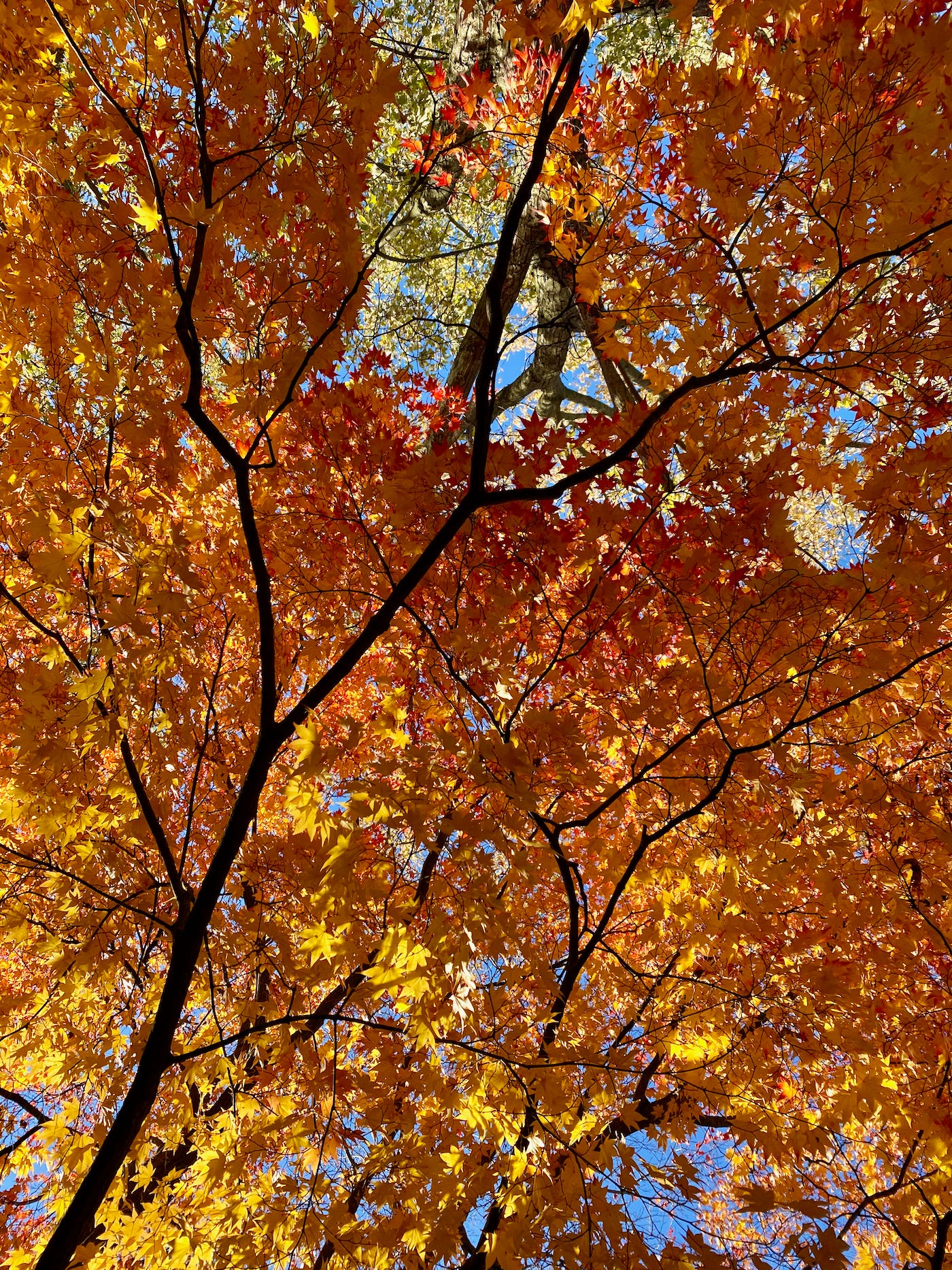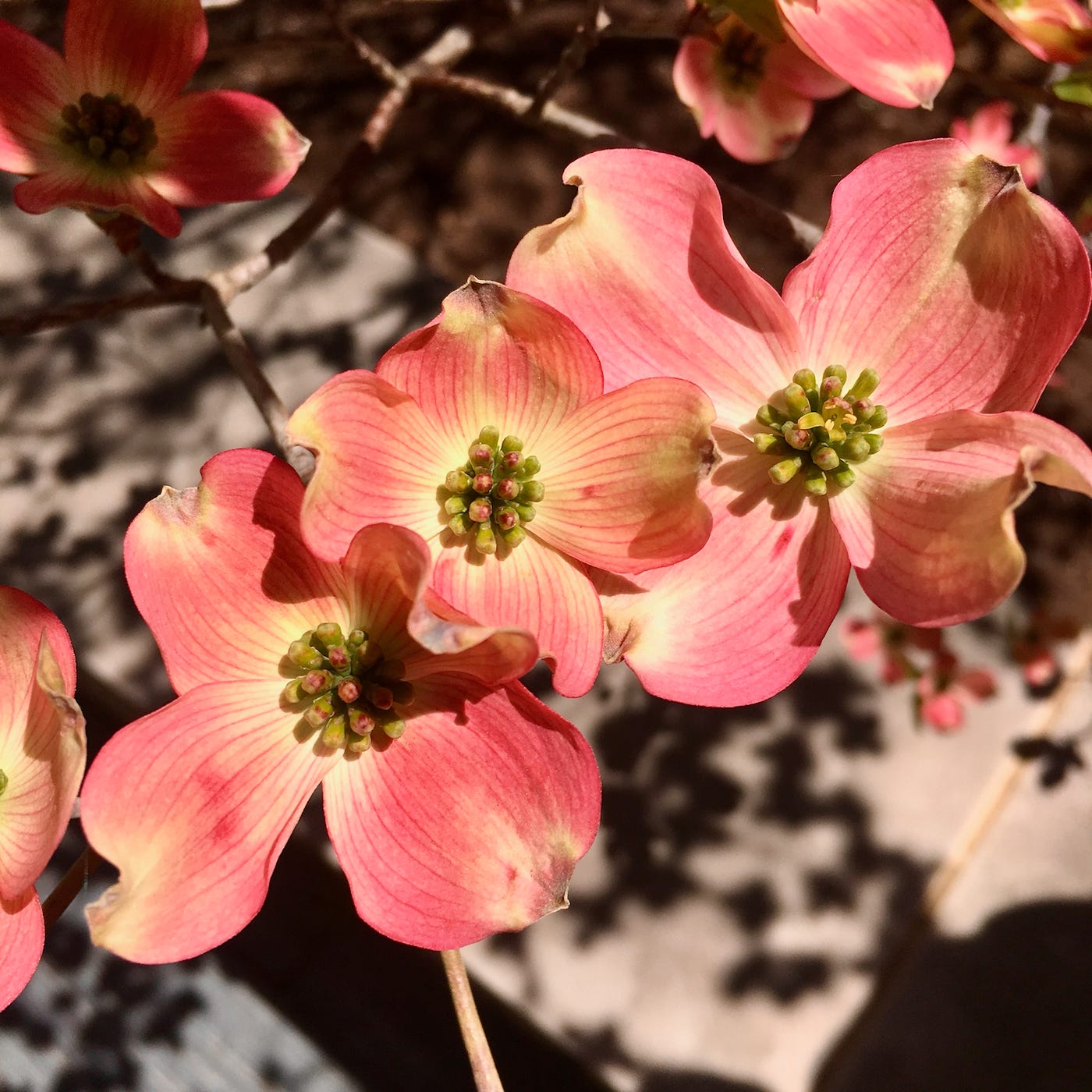Love Your Neighbor
Some fragmented thoughts on whether trees fart, the unseen labor of plants, apple-celeriac soup, a congressman's servant leadership, and an ancient prayer
The 225th Day after Coronatide*
Grand Rapids, Michigan
Dear reader,
I was doomscrolling Twitter the other night, and I saw a viral tweet from a plant scientist named Mary Heskel that made me laugh:
A few days later, I called Heskel, who is an assistant professor at Macalester College in Minnesota, to chat about the tweet and her work.
Heskel’s research lab explores how plants respond to the changing environment. She did her PhD research in the Alaskan Arctic, studying how a warming climate affects the dwarf birch, a shrub that typically grows at most knee-high. The short version: They grow taller, crowding out the sedges and grasses that typically also live in these climes. “These plants are really good at taking up nutrients, so they’re winning now,” she explained. Humans concerned about climate change might ascribe some villainous role to such shrubs, though they’re just doing what they know how to do: “There’s nothing inherently bad about them, but they’re definitely benefiting from climate-change-induced warming.”
Heskel’s specialty is gas exchange—how changes in the environment affect the way in which plants absorb, say, carbon dioxide. Given that, it’s not totally inappropriate that her daughter asked about tree farts, though Heskel isn’t even sure that her kid, who is about to turn 4, really understands what she does. “I tell her I’m a teacher,” she says. “Just like she goes to school, I tell her that I have to go to school.” The question was more one of those odd, goofy questions that kids ask at bedtime as they’re stalling before the lights go out, and it was probably inspired by a book about trees that her daughter got for Christmas.
“Then I was like, Well, wait, what is a fart?” Heskel told me. “Is it gas? It is waste? Is it metabolism? You start trying to define things—and how do you define a very silly question?” Turns out unexpected existential questions about tree farts appeal to the inner 4-year-olds in many of us. Other scientists chimed in on Twitter, trying to reason through the query. Some who study plants thought that there might at least be some resemblance between plant gas exchange and farts, but others who research animals asserted that trees can’t fart, because they don’t have bodies like animals.
If the question sparked greater interest in plants, Heskel is glad. She thinks the work that they do is underappreciated. On every leaf, there are stomata—“these little mouths,” she calls them—that suck carbon dioxide from the air. Inside the leaf’s cells, oxygen is produced and then ejected into the atmosphere, and those tiny bits of CO2 transform into sugars and structural molecules. Most of us learned that first part about carbon dioxide being taken in and oxygen emitted in grade school, but fewer understand the importance of the latter. “This invisible process drives almost all of life on earth and is fundamental to our existence,” Heskel said. “Anything you eat originated in the atmosphere. A plant formed it through photosynthesis into energy that’s useful for non-plant life. It’s not that we just need plants for oxygen; we need them for everything.”
While I’ve come to love gardening in recent years, I confess I haven’t thought much about our utter dependence on the unseen, cellular-level labor within plants. “When you study plants, you get a broader perspective on how people force organisms into hierarchies, with humans at the top,” Heskel said. “It often leads to human exploitation of environments, which often extends to other humans. There’s this arrogance about what humans feel like they are owed from the environment. It’s there, so we can take it.” Her research has yielded not just scientific insights but also humility and a less human-centric perspective. “Even with this plant-fart thing: Some people said plants don’t have butts, so they can’t fart. But why would we frame everything according to an animal-body plan?” she asked. “There are other forms of life! And they sustain all existence, so you can give them credit where credit is due.”
It can be so hard to appreciate another living thing on its own terms rather than based on what it does—or doesn’t do—for us. When I asked Heskel what her favorite tree was, she first responded by telling me what she doesn’t like: “Any tree that has needles; they’re unwieldy to work with.” Then she shared her fondness for the tulip poplar, “which is not a tulip or a poplar. It has a nice-shaped leaf that looks like a cat’s face,” she explained. “I’m really bad at tree identification, which is kind of a weakness when you work in my field, but I can always identify them! They’re very pretty.” She also has a nostalgic affection for live oaks. “I’ve never worked with them, but I grew up in Florida, so they make me think of home,” she said. “They’re the trees I climbed growing up.”
I’d guess that many of us classify trees in similar ways. I have a soft spot for the regal redwoods of my native California; the old banyans that arch over my favorite road in Miami, where I went to high school; and the blooming dogwoods and saucer magnolias that signaled the arrival of spring on my college campus. But there’s more to the life of trees that our personal nostalgia and delight. They have lives of their own. “I try to appreciate the things I can’t do as a human that other species can’t, and that can be humbling,” Heskel said. “I’m probably not going to live past 100; plenty of trees are going to live past 100. I also can’t stand outside all winter long and just come back to life in the spring. I would die within hours in sub-freezing temperatures.” To regard these creatures and their resilience is to understand their unique strengths, their particular abilities, and our own frailties.
To deepen our attentiveness to the world around us, Heskel recommends the book Braiding Sweetgrass, by the plant ecologist Robin Wall Kimmerer. One of the compelling questions asked in that beautiful book is, How do you connect with things you don’t feel connected to? “One of her suggestions was to learn the names of the species that are around you,” Heskel said. “She’s not saying learn the Latin names or the scientific names. You can make up your own silly names. It’s just about being familiar with the plants and noticing them more.” It’s awareness. It’s attention. It’s understanding your surroundings. “People do this when they garden,” she explained. “You stare at something waiting for it to grow. You nurture it. You notice differences. The tree you always walk by on your way to work—how is it different today from how it was last week? It’s especially fun in areas with deciduous trees; notice when the leaves come out in the spring, and then notice when they fall.”
What pervaded everything Heskel said to me was her profound respect for these other life forms, respect that had blossomed into appreciation and grown into learning. “You’re not by yourself. These are your neighbors,” she said. “We don’t exist in isolation. On Earth, we’re one of millions of species. We should be aware of more than just one if we’re sharing space.”
Such perspective is one of the biggest gifts that scientists like Heskel and Kimmerer can offer us. They help us better understand what it means to be a good neighbor and a good human. Through their research and their writing, they show us of all that we could learn, if only we would begin to perceive. They humble us.
In the end, the question that Heskel’s kid asked might not be so silly after all. To ask if trees fart is to acknowledge the creatureliness of another creature, to express curiosity about its being, and to reckon with how it might be similar to as well as different from our own. “Think outside your own existence,” Heskel said, “and maybe you’ll feel just a little less lonely.”
What I’m Cooking: With little growing in our own yard except some remnant herbs, we’ve been eating our way through the farmers’ market. Last weekend, I made apple-celeriac soup. Peel and chop two smallish celery roots, two medium-sized potatoes, and one honeycrisp apple. Sauté in butter or rendered bacon fat (save the bacon bits) with onion and garlic, then simmer in broth (I used chicken, but vegetable works fine) until everything is tender. Purée with an immersion blender, and then season with salt, plenty of freshly ground black pepper, and a little bit of nutmeg. I chopped up some Brussels sprouts, roasted them in a pan, and seasoned with salt, pepper, a dash of sriracha, and a splash of maple syrup. Those went on top, along with the bacon bits.
I made a cornbread to go with the soup, and then we ended up with half a pan that was quickly going stale, given the dry, winter heat in the house. So we decided to do something we never think to do except at the holidays: we made cornbread stuffing, to go with roasted chicken thighs. It reminded me how many beloved foods sprang from thrift, culinary reinvigoration that prevents waste. And what we consider to be a vessel of nostalgia often has a much longer and more complicated history, one marked by necessity and even cruelty but also resilience and survival.
What I’m Reading: Honestly, I couldn’t bear to write another essay about the state of U.S. politics. But I have been reading a lot (see “doomscrolling” above). Some of you might have seen the story about Representative Andy Kim, a Democrat from New Jersey, who grabbed a garbage bag and joined the maintenance workers at the U.S. Capitol to clean up after the riots. AP photojournalist Andrew Harnik took a photo of Kim, masked, suited up, and picking up empty plastic water bottles late at night. “When you see something you love that’s broken, you want to fix it,” Kim told the AP. “It really broke my heart and I just felt compelled to do something.”
It took me a while to parse the complicated feelings that welled up in me as I read the story: gratitude for Kim’s servant leadership; respect for his willingness to do a job that some in Congress would consider beneath them; dismay that a person of color had to clean up after white supremacists. I wonder if anecdotes like these, inspirational as they can be, sometimes serve as palliatives. They are heartwarming, yes. But they also provide emotional cushioning amidst discord and rush us back to the comfort of goodness. Truth is, there should never have been a mess for Kim to help clean up.
What I’m Listening to: Because I am unwise, I put on the House impeachment hearings while I was trying to do some sermon writing earlier this week. The clear lesson: Do not be like me! As I was writing you this letter, I made a better choice: Francisco Ortega’s “Trisagion.” It’s a lovely modern setting of an ancient prayer, the Agios O Theos (Holy God), that is still used in Eastern Orthodox worship: Holy God, holy and mighty, holy immortal One, have mercy on us. Sometimes, when I’m feeling sad and disconnected and lack the words for any more eloquent prayer, it’s a gift to be able to return to words that others have spoken to God for millennia.
Today marks one year since we arrived in Michigan. It feels like a century, to be honest, given all that we’ve witnessed—as a country, as a world. The highs have been brilliantly high, the lows super-low. I can’t say it has been an easy year; if I did, who would believe me? Yet we have no regrets about moving here. We are thankful.
As always, I’d love to hear from you. Tell me about your favorite tree or what’s coming out of your kitchen these days or where you’re finding hope.
I’m so glad we can stumble through all this together. I’ll try to write again soon. In the meantime, practice gratitude and be kind to one another—and to yourself.
Yours,
Jeff
*I’m still counting my days from June 1, when my governor, Gretchen Whitmer, ended Michigan’s stay-at-home order. I wonder if we have grown numb to the news. More than 4,200 people died of COVID-19 on Tuesday, a grim new record. Please, for your own sake and for the love of your neighbor, stay home, stay masked if you have to go out, and stay safe.








We grew up with a weeping willow at the end of our road as kids (UK). It was a meeting point when ‘playing out’ of an evening. Lots has changed, but it’s still there.
And My Dad was the village ‘tree warden’ and can name almost any tree you ask him. I must ask him more.
In the UK’s first lockdown, in a part of London called Walthamstow, somebody walked round and wrote the names of trees in chalk on the pavement next to them all. I just think that’s wonderful.
Thank you for sharing your words. I love the encouragement to consider other species since we all share this planet.
I’ve lived in Michigan my whole life. It’s not perfect, but it’s home and I’ll always love it for that. I’m also not good at identifying trees, but I remember a large one in the backyard of my parent’s house that provided a sturdy back rest and great shade.